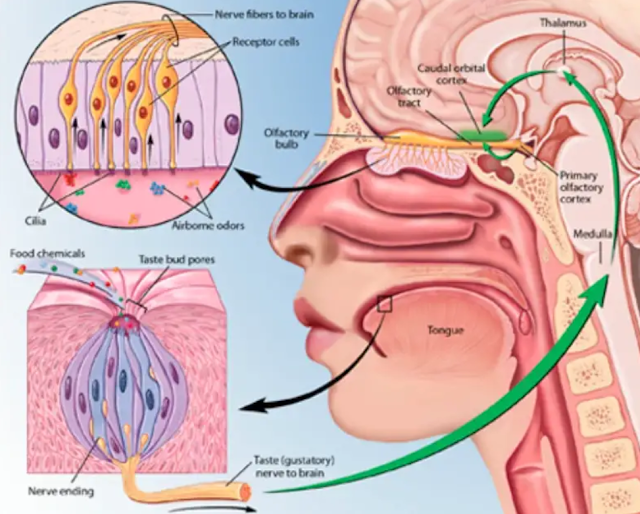Brain - Hearing
Hearing
This work was done as a part of Summer Program at Elio Academy of Biomedical Sciences.
Author: Riyaa Sri Ramanathan
Human hearing is one of the most important senses, central to social interactions. Communication within one another happens by processing and interpreting complex messages in the form of speech sounds. Hearing (auditory) system picks up several qualities of signals it detects, such as a sound’s pitch, loudness, duration, and location. Auditory system also analyzes complex sounds, breaking them into separate components or frequencies.
Process of hearing happens in a more incremental way. Hearing involves a series of steps that convert sound waves in the air into electrical signals that are carried to the brain by nerve cells. Sound in the form of air pressure waves reaches the pinnae of the ears, where the waves are funneled into each ear canal to reach the eardrum, also known as tympanic membrane. The eardrum vibrates in response to these changes in air pressure, sending these vibrations to three tiny, sound-amplifying bones in the middle ear — the malleus, known as hammer,the incus,known as anvil, and the stapes, known as stirrup.
The last bone in the chain, the stapes, acts like a tiny piston, pushing on the oval window. Oval window is a membrane that separates the air-filled middle ear from the fluid-filled, snail-shell-shaped cochlea of the inner ear. The oval window passes on the mechanical vibrations of the stapes into pressure waves in the fluid of the cochlea, where they are transduced into electrical signals by specialized receptor cells or hair cells.
An elastic membrane that runs along the inside of the cochlea like a winding ramp, spiraling from the outer coil to the innermost coil, near the oval window is the Basilar Membrane. The basilar membrane is “tuned” along its length to different frequencies or pitches. When fluid inside the cochlea ripples, the membrane moves, vibrating to higher pitched sounds near the oval window to lower-pitched sounds in the center. Rows of small sensory hair cells are located on top of the vibrating basilar membrane. As the membrane moves up and down, microscopic hair-like stereocilia extending from the hair cells bend against an overlying structure called the tectorial membrane.
The bending caused by the hair cells open small channels in the stereocilia that allow ions in the surrounding fluid to rush in. The physical movement of rushing in ions is converted into an electrochemical signal that stimulates the hair cells and the signal leaves the auditory nerve. The auditory nerve sends the impulses to the thalamus, which is the brain’s relay station for incoming sensory information. The thalamus then sends the information to the auditory part of the cerebral cortex.
Several thousand hair cells are positioned along the length of the basilar membrane. Each hair cell responds to a narrow range of sound frequencies most strongly, depending on how far it is located along the cochlear membrane. Once the current pitch and frequencies are identified, the information is sent to the brain for further processing.
The information from both the ears are used by the brainstem and thalamus to compute sound’s direction and location. The frequency map of the basilar membrane is maintained throughout the primary auditory cortex in the temporal lobe, where different auditory neurons respond to different frequencies. Some cortical neurons respond to sound qualities such as intensity, duration, or a change in frequency. Other neurons are selective for complex sounds, while others specialize in various combinations of tones.
Beyond the primary auditory cortex, at higher levels, neurons are able to process harmony, rhythm, melody and combine these types of auditory information into a voice or instrument that can be recognized. Although sound is processed on both sides of the brain, the left side is mainly responsible for understanding and producing speech. Someone with damage to the left auditory cortex, especially in a region called the Wernicke’s area, due to a stroke, is able to hear a person speak but can no longer understand what is being said.
Majority of cases of loss of hearing occur due to the loss of hair cells. Hair cells, once die, don’t regrow. Research currently focuses on how inner structures like hair cells develop and function. Exploring new avenues of therapy regarding neurogenesis to replace the damaged hair cells can be a stepping stone in hearing.
Author: Riyaa Sri Ramanathan
This work was done as a part of Extended Research Program at Elio Academy of Biomedical Sciences.





Comments
Post a Comment